read detailed info
see map
Monday - Tuesday 26 - 27 August
360 €
The excursion joins together the most famous sites stuck by the eruptions of the Vesuvius, the now-sleeping volcano, both in the Early Bronze (Nola) and the Imperial Roman Age (Herculaneum and Pompeii), with the visit to the site where the Greek colonists first landed on Italy (Cumae), in the volcanic Phlegraean fields and in front of the wonderful Tyrrhenian seaside.
The impressive preservation of the sites destroyed by the “Avellino” eruption (ca. 1900 BCE: Nola Bronze Age site) and by the Pompeii eruption (79 CE: Roman Imperial Herculaneum and Pompeii) gives to the archaeologists an extraordinary glance into the ancient communities’ life, and into their response to natural disasters. The archaeological concept of “Pompeii premise” is just a reflection of the fame of the contexts.
At Cumae, the monumental architecture of the underground tunnel access to the site, as well as of the so-called Sybil’s cave (indeed a massive substructure corridor), the dominant location of the temples and the scenic view of Tyrrhenian Sea, with the Phlegraean islands in background and the drowning of the sun at sunset, release a strong feeling of the meaningful relation between site and landscape.
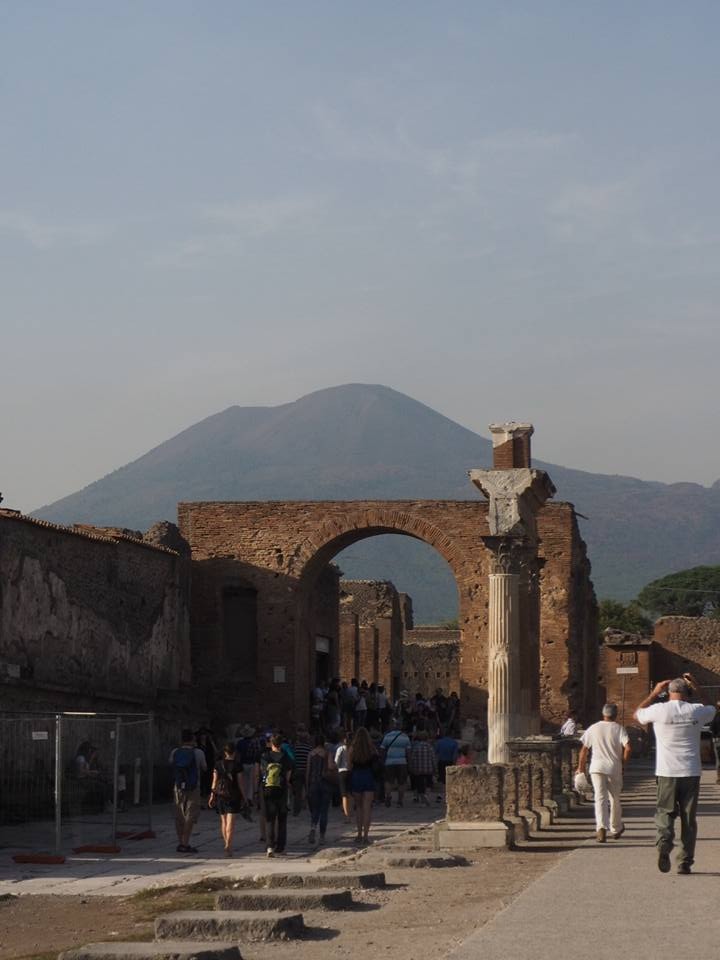
View of the Forum of Pompeii with Mount Vesuvius in the background
© D. Serino
read detailed info
see map
Tuesday 27 August
110 €
The record of Paleolithic in Latium has relevant contexts with significant toolkits, such as the complexes of the (late) early Paleolithic with small tools and bone industry flanking bifacial handaxes; or the characteristic “Pontinian” Mousterian pebble industry of the middle Paleolithic, as well as some impressive finds of hominin remains, e.g. from Ceprano, Fontana Ranuccio, Grotta Guattari, Saccopastore, to name some.
The abundant products of volcanic eruptions in Latium have both helped to define chronologies, and to generate thick stratigraphies, suitable for research even in rather early times, e.g. following quarry exploitation, such as in Saccopastore, Pofi, or Fontana Ranuccio. Surface surveys in the Pontine Plain conducted by Dutch colleagues in the second half of the 20th century CE have given some hints at the open-air Paleolithic settlement.
The excursion is focused on Southern Latium and some contexts under present research, and on the Prehistoric Museum in Pofi.
The tour can be coupled with the 28th August, Wednesday morning visit to the Civilizations Museum in Rome, containing some of the relevant finds from Rome city and surroundings. Some of these sites, not included in this tour, correspond to riverine deposits with animal bones, particularly elephant remains, delivering also secondary placed hominin industries and anthropological remains, such as at Polledrara, Casale de’ Pazzi and Castel di Guido. A visit to one of these sites inside Rome could be planned last-minute on 28th August, Wednesday morning or 1st September, Sunday morning.
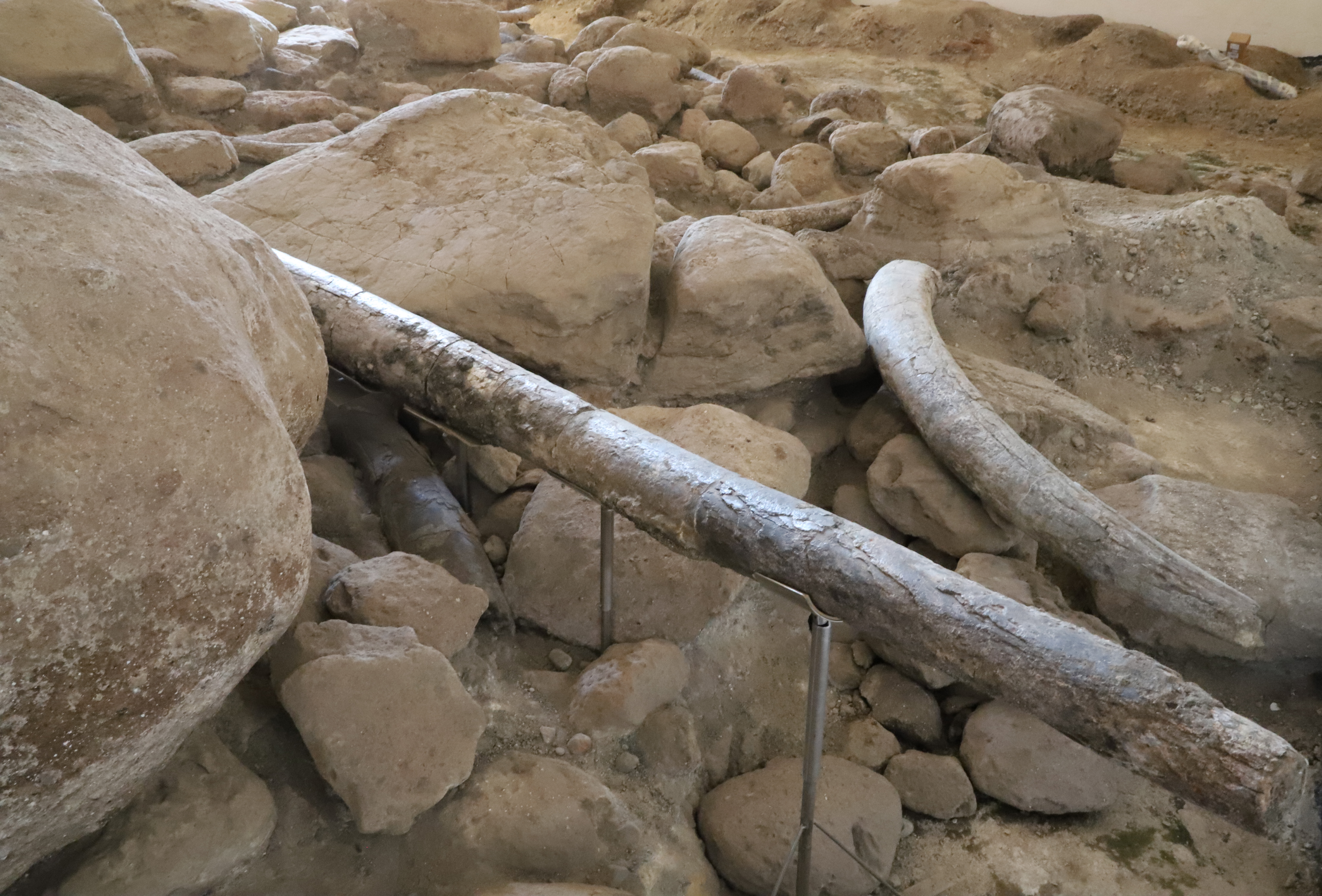
Elephant tusks from the excavation at Casal de’ Pazzi, now preserved on-site in the museum (ca. 200.000 BCE)
© GA
read detailed info
see map
Tuesday 27 August
115 €
The Etruscan cities of Cerveteri and Tarquinia are the best archaeological examples for an in-depth look at the ancient history of Southern Etruria, which also influenced Roman history in its early stages. The necropolises of Banditaccia (Cerveteri) and Monterozzi (Tarquinia) have been a World Heritage Site since 2004 because they are unique testimonies of the Etruscan civilisation from an architectural point of view. In the Banditaccia necropolis of Cerveteri one can observe a stucco reproduction of a real house for the afterlife (like in the Tomba dei rilievi), while the painted tombs of Tarquinia give us a lively social insight, through the representation of daily life and feasting, together with myths and the dreadful gods of death. The associated archaeological museums (one located in part of Palazzo Ruspoli in Cerveteri and the othe in the splendid Palazzo Vitelleschi in Tarquinia) focus on excavations in the necropolis, urban settlements and sanctuaries. There is highlighted the early emergence of proto-urban centres around 950 BCE (earlier in Tarquinia than in Cerveteri) and their close connection with the surrounding territory, the late 8th cent. BCE emergence of elite groups in the Orientalising period, the akmé of archaism, the slow fall of the Etruscan city-states and their relationship with Rome, which was more conflictual for Tarquinia and brought instead to a rather early cultural assimilation for Cerveteri.
In addition, you will be surrounded by an exceptional natural landscape that will take you into a fascinating atmosphere of great connection with nature and ancient history.
Finally, all the urban atmospheres that you will find will give a glimpse into the Middle Ages, like the picturesque village of Ceri perched on a tuff cliff and the splendid remains of medieval Corneto in Tarquinia.
The tour can be coupled with the 1st September, Sunday visit to Vulci, Sorgenti della Nova and Pitigliano.
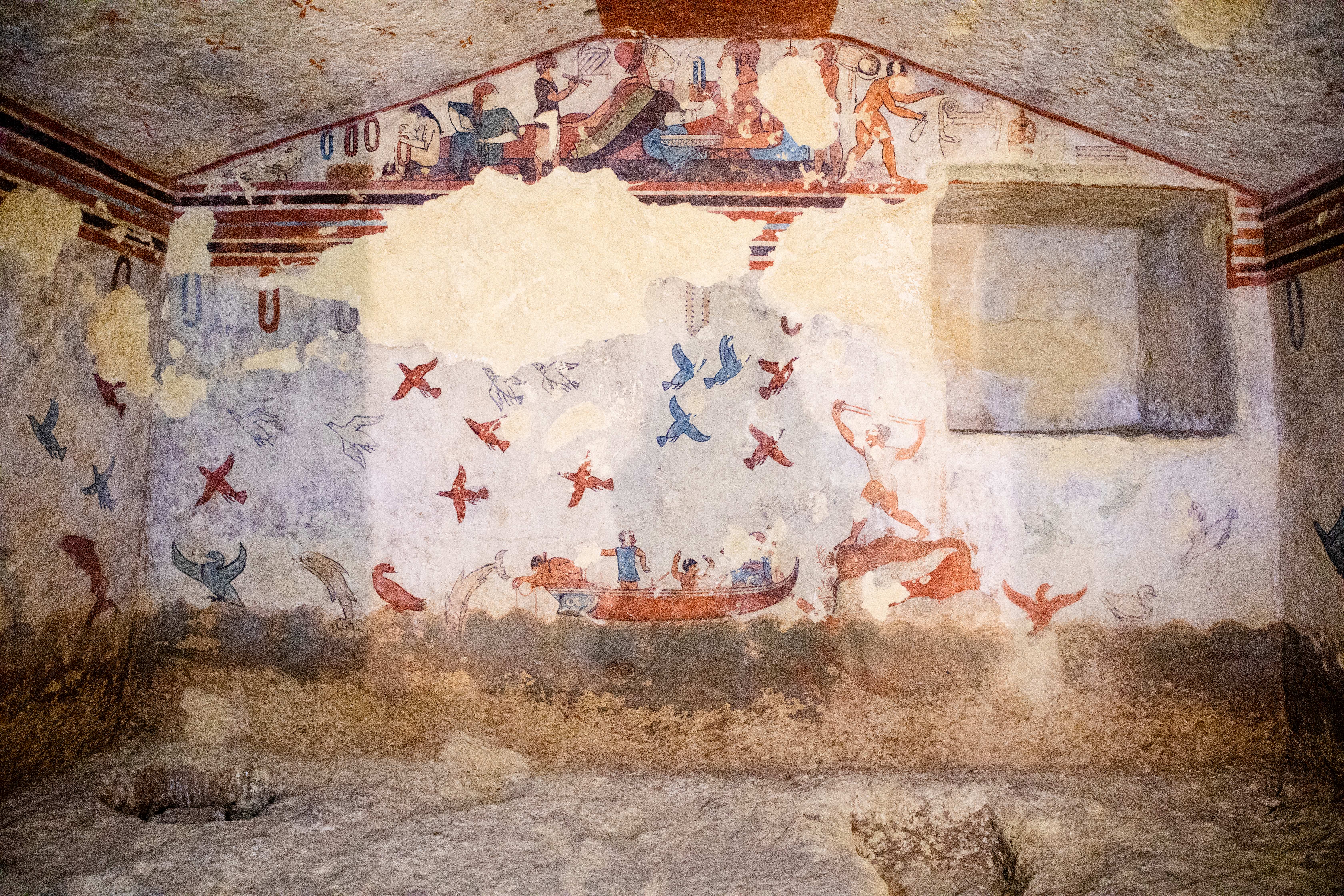
Tarquinia, Monterozzi cemetery, chamber tomb of hunting and fishing (late 6th cent. BCE)
© courtesy PACT - Parco archeologico di Cerveteri e Tarquinia
read detailed info
see map
Wednesday 28 August
25 €
This half-day tour will roam through the center of Rome, moving from church to church, where 6 Caravaggio paintings are hosted, and from baroque squares to churches, and to the renown chapel of St Ivo in the former seat of Sapienza university, now hosting part of the State Archive of Rome. It is a tribute to Caravaggio (1594-1606), Bernini (1598-1680) and Borromini (1599-1667), artists that shaped our perception of painting and architecture, in the pulsating heart of Rome.
Baroque style was the style that accompanied the Counter-Reformation (after 1545 CE), the answer of the Catholic Church to the challenge posed by the Protestant Reformation, epitomized by the publication of Luther’s theses in 1517 CE, and Bernini, Borromini and Caravaggio were the artistic masters creating a language of outstanding quality for this refoundation (and anyway substantially reactionary) movement. Finding the new in these troubled times was an extraordinary result, that ultimately shaped modern Rome.
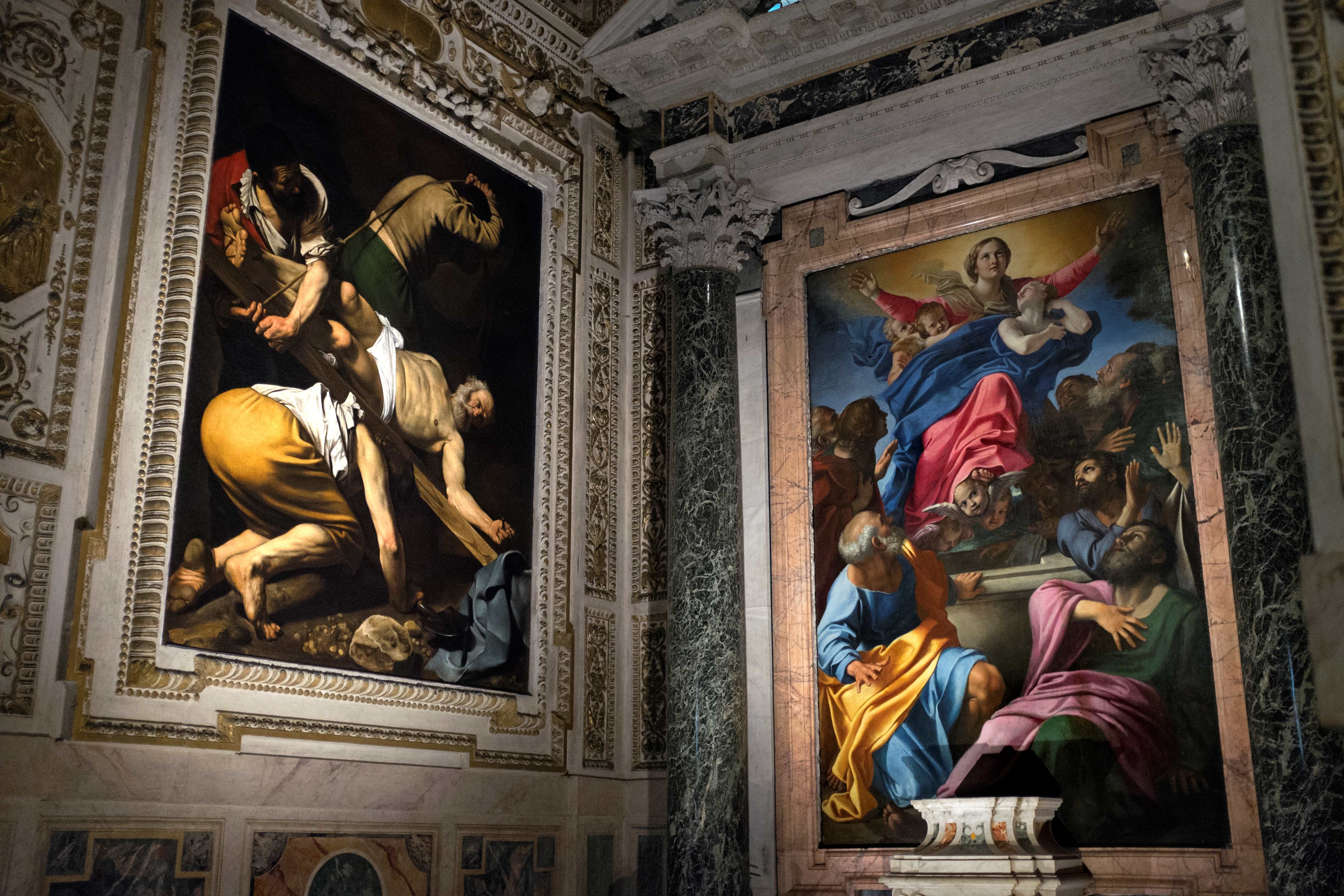
Crucifixion of St. Peter (Caravaggio) and Assumption of the Virgin (Annibale Carracci) in the Cerasi Chapel, Basilica of Santa Maria del Popolo (17th century)
© Allan482, CC BY-SA 2.0 <https://creativecommons.org/licenses/by-sa/2.0>, via Wikimedia Commons
read detailed info
see map
Wednesday 28 August
28 €
This half-day tour includes the visit to some of the oldest and best preserved testimonies of Christian religious activity in Rome, that is: the church of Santa Maria Antiqua inside the Roman Forum Area (6th-9th cent. CE), at the base of the Palatine hill; the Basilica of San Clemente, with three superimposed religious buildings (a mithreum of Roman Age (2nd cent. CE), a 4th cent. CE church with frescoes until 11th cent. CE and the present Basilica, dating to the 12th cent. CE), the Santi Quattro Coronati Monastry (4th cent. CE, restored in 11th cent. CE) and finally the Lateran Baptistry (4th cent. CE).
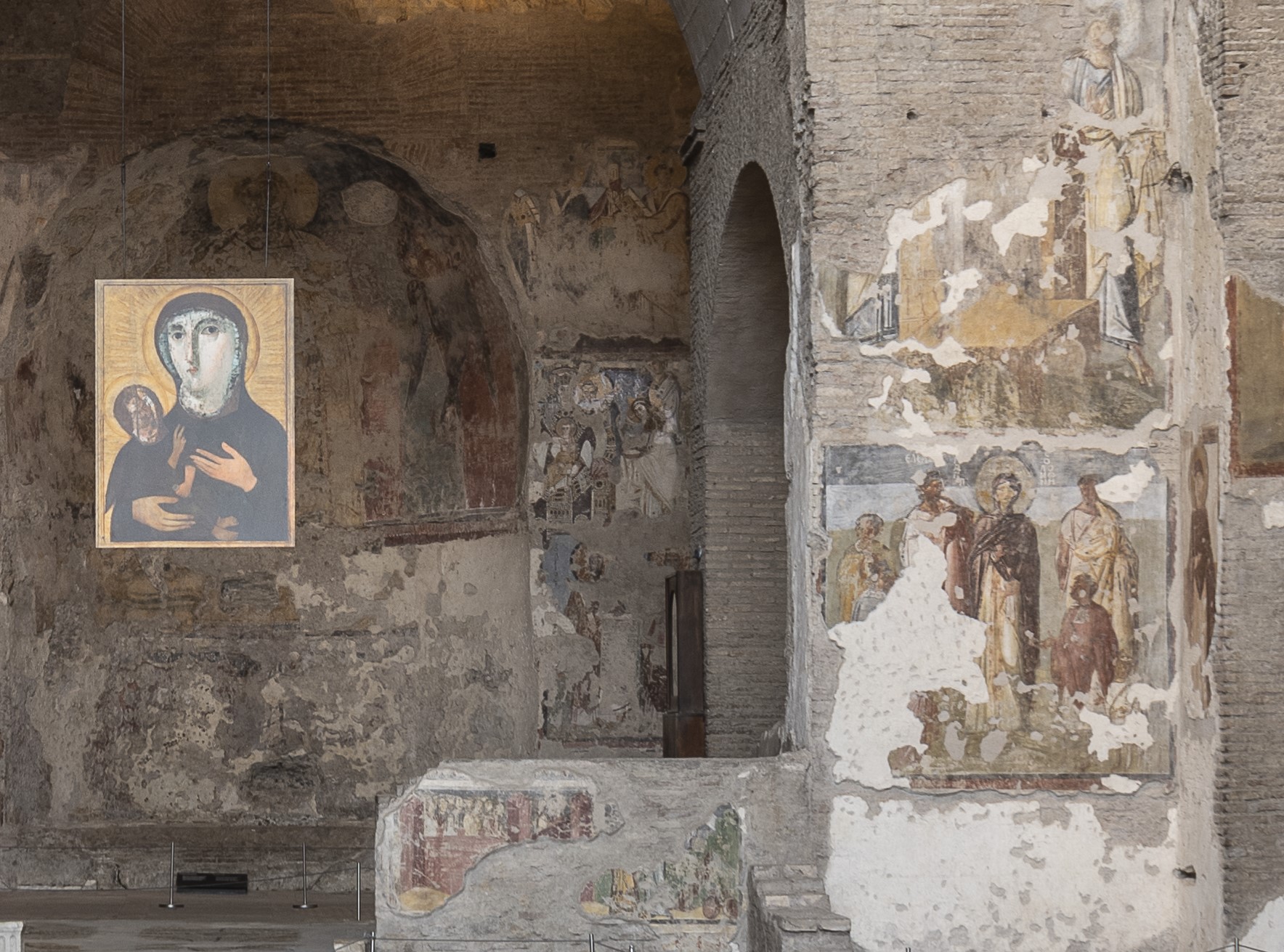
Wall paintings in the church of S. Maria Antiqua, Roman Forum (6th-late 8th century)
© S. Murrone
read detailed info
see map
Wednesday 28 August
10 €
This half-day tour corresponds to the visit to the Museum of Civilizations, and particularly (but not only) to the former "Luigi Pigorini" Prehistoric Ethnographic Museum prehistoric collection.
The main focus of the visit will be the collection of the underwater excavations led by M.A. Fugazzola Delpino at La Marmotta Early Neolithic settlement, on the shores (nowadays submerged) of Lake Bracciano in Northern Latium, are impressive for the preservation of organic remains and the range of items recovered: dug-out pirogues, whole vessels, sickles in wood and flint, textile implements, abundant faunal and seed and fruit remains etc. represent a unique glimpse into 6th millennium BCE ways of life.The Museum collections allow a rather comprehensive overview on Latium and Italian Prehistory, from the Paleolithic to the Iron Age, with highlights such as the Figurines of Paleolithic (Savignano “Venus”) and Neolithic Age, Copper Age collective graves of central Italy (e.g., Rinaldone and Ponte S. Pietro cemeteries), S.Cristina Bell Beaker grave, from northern Italy, or the Fosso Conicchio Bell Beaker complex, from central Italy, Bronze Age palafitta and Terramare finds from northern Italy, the Final Bronze Age hoards of Coste del Marano and Piediluco-Contigliano from central Italy.The Mesoamerican (with Caribe and Aztec masterpieces) and Ethnographic (Africa, Oceania, Asia, America) collections are also very important.The Museum is further completed by a Late Roman and Medieval section, including the magnificent marble (opus sectile) decoration of a domus at Ostia Antica (end 4th cent. CE) and grave goods from Lombard cemeteries of Nocera Umbra and Castel Trosino (6th-7th cent. CE).The Museum is now involved in a reflexive program of decolonization and integration with contemporary art, particularly important, as its collections include also items deriving directly from the Italian colonial period of the 19th and 20th cent. CE.

Dug-out pirogues from Marmotta (Bracciano lake) at the Museum of Civilizations (6th mill. BCE)
© F. Palazzini
read detailed info
see map
Sunday 1 September
140 €
This excursion targets some highlights of medieval Latium, in a concentrated area of the southern part of the region, with digressions on the Roman Age and the enchanting early 20th century gardens (English-style), enclosing the ruins of medieval Ninfa.
The landscape includes the contact between the Lepini mountains and hills, and the subsident Pontine plain, in the past shifting between marshes and reclaimed land: this combination of high and low-lying spots is reflected in human life through the centuries.
The area around Sermoneta castle and village was part of the Iron Age history of Latium, as the 8th cent. BCE graves exhibited in the Pottery Museum at Sermoneta show. The settlement on M.Carbolino, north of Sermoneta, stood in isolation. Roman Norba, whose imposing cyclopean walls are as impressive as the location, dominating the Pontine plain down to the sea, is a good introduction to the local landscapes of power.
The Abbey of Valvisciolo is an example of gothic Cistercian architecture of the 13th cent. CE, reflecting the monastic productive and religious activity, out of the feudal villages.
Sermoneta, a feudal center dominating from the hill, has a beautiful castle and a fancy village, while Ninfa was a medieval plain fortified town, subject to conquests and destructions, and eventually to abandonment due to malaria infesting the marshy plain; in the early 20th century, the Caetani family started transforming it in a lush garden, as it is today.
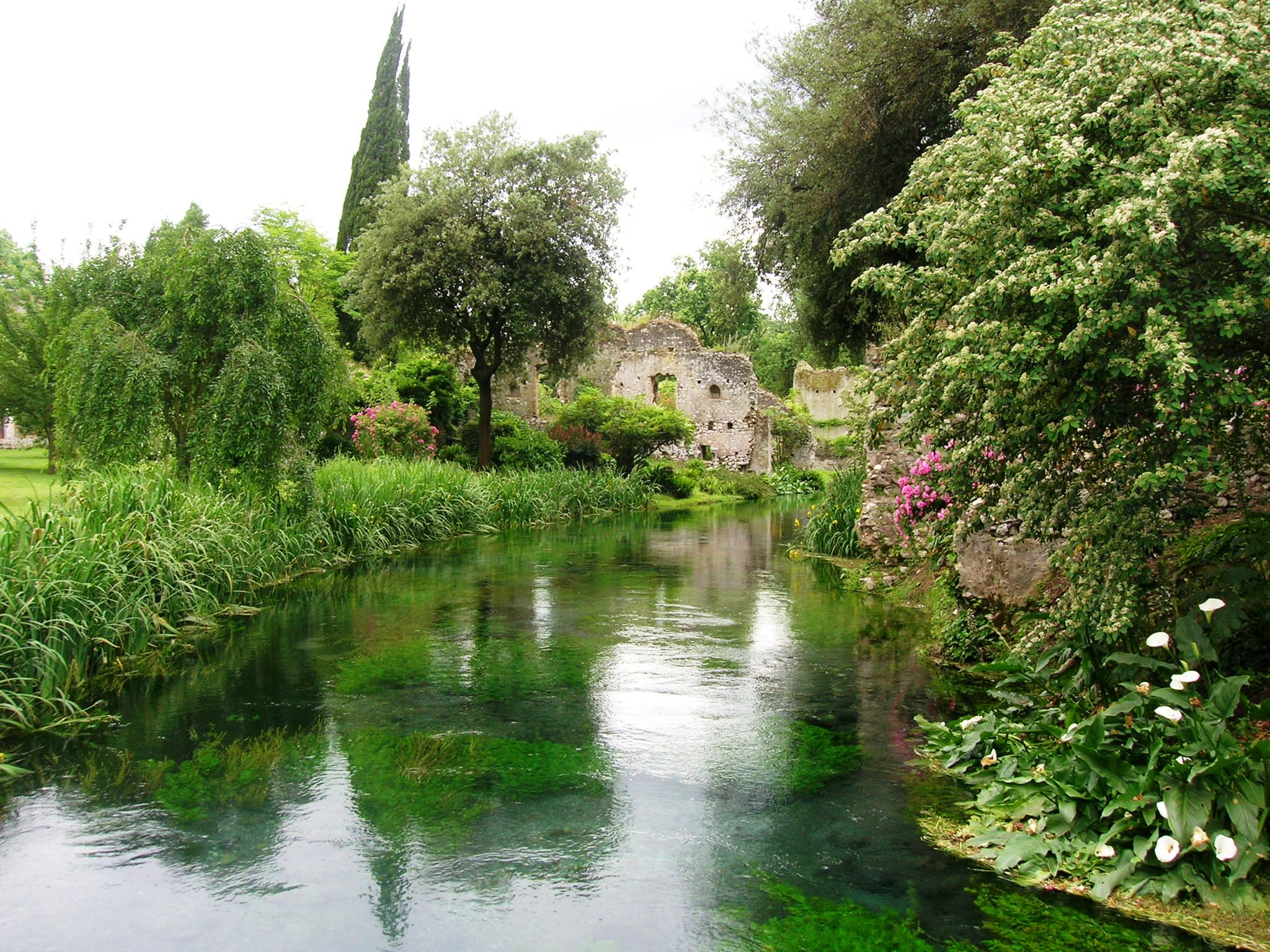
View of the Gardens of Ninfa
© Mentnafunangann - Opera propria, CC BY-SA 3.0 <https://creativecommons.org/licenses/by-sa/3.0>, via Wikimedia Common
read detailed info
see map
Sunday 1 September
115 €
The ancient city of Vulci lies on the right bank of the Fiora river, in the centre of a wide plain on the southern borders of the flat and undulating landscape of Maremma. The archaeological and nature park covers an area of 900 hectares and is managed thanks to an agreement with a private-public partnership. Here you can visit some of the most important Etruscan princely tombs of the northern and eastern necropolises, the Roman-Etruscan city and the Vulci Archaeological Museum inside the Castello della Badia, near the suggestive Abbadia bridge. Worthy of note are the ongoing archaeological excavations conducted by various Italian and foreign universities, under the coordination of the Ministry of Culture, which are giving new impetus to our knowledge of the ancient city. The hillfort of Sorgenti della Nova is related to the formation of the proto-urban centre of Vulci: a long-term excavation brought to light wide areas of this important Late Bronze Age settlement. It occupies a tuffaceous plateau of about 15 hectares, densely organised in artificial terraces that included wooden huts and small cavities dug into the rock for various daily activities and likely cultic practices.
The fascination of the area continued into the Middle Ages with the breathtaking town carved into the tufa stone in the heart of the Tuscan Maremma, called Pitigliano, also known as Little Jerusalem (you will discover why). Here you can also enjoy the little Civic Archaeological Museum with peculiar objects from recent excavations in Pitigliano and from the Martinucci collection, previously kept at the National Archaeological Museum of Florence.
The tour can be coupled with the 27th August, Tuesday to Cerveteri and Tarquinia (Super Etruscans).
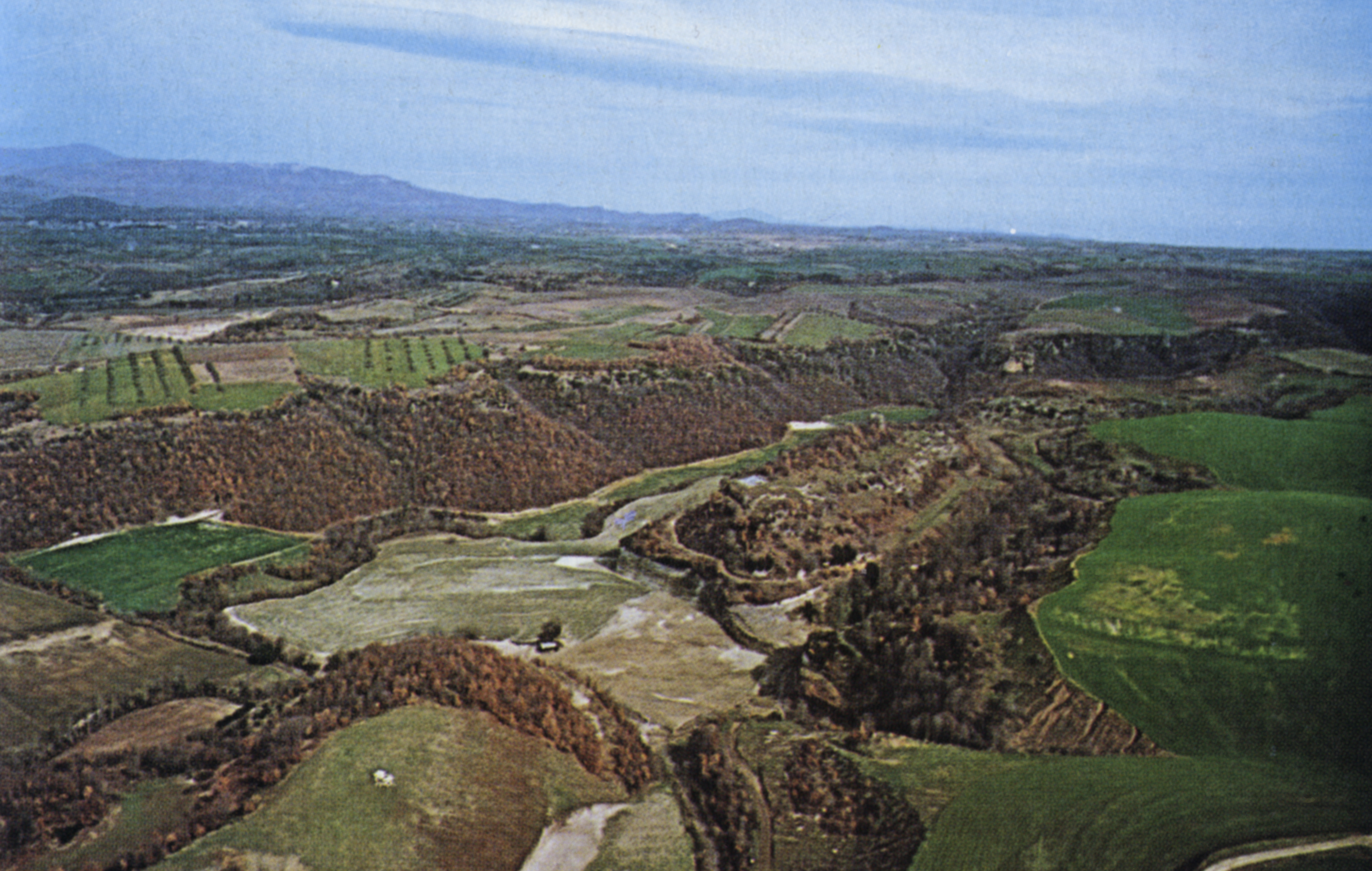
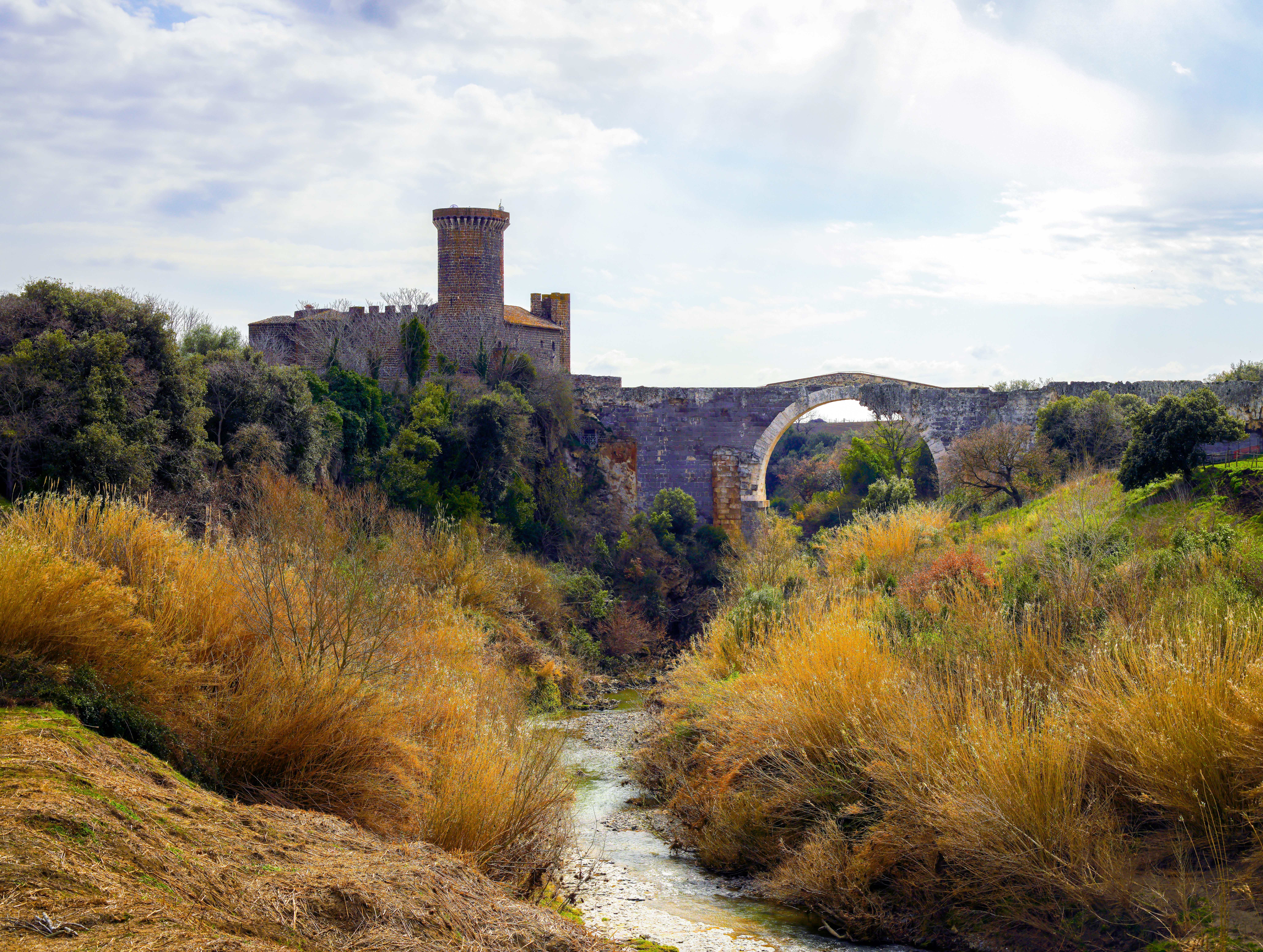
The Abbadia Castle and the Devil’s Bridge, Vulci
© NikonZ7II, CC BY-SA 4.0 <https://creativecommons.org/licenses/by-sa/4.0>, via Wikimedia Commons
read detailed info
Sunday 1 September
50 €
Ostia, the ancient harbour of Rome at the mouth of the Tiber, rose from a small settlement in the 4th century BC to a flourishing city of 50.000 inhabitants in Roman times. Trade of grain and other goods to Rome brought wealth and income. Multistorey residential buildings housed simple residences while sumptuous doma bore witness to its wealth. The town had numerous religious buildings, fora, temples and a theatre. The presence of shrines of different cults, including twenty mithraea and a synagogue, testifies the multicultural and tolerant society of the city in the imperial age; Christianity also left significant monuments, such as the basilica built by Emperor Constantine in the 4th century.
During late antiquity, Ostia gradually lost its importance in favour of the new settlement of Portus, where the imperial harbours of Claudius and Trajan were established. The city was gradually abandoned and, in the 9th century, a little stronghold was created in the outskirts of the ancient city, the modern-day Borgo di Ostia.
The city has significant remains of its long history. Today, the Parco Archeologico di Ostia Antica researches, protects and presents the remains of this flourishing Roman town. Brick structures standing several storeys high, marble steps, mosaic floors and wall paintings are witness to Roman architecture and craftsmanship but also provide significant opportunities for research. The city is also a tourism destination and tourism is an important part of the city’s economy. For local residents it is a source of pride but too many tourists cause stress and dissatisfaction.
The EAA study tour to Ostia Antica will be a combination of site visits, papers from various stakeholders and workshop discussions. The day will have a strong focus on issues of presentation, interpretation and conservation as well as tourism issues and benefits for both archaeologists and visitors.
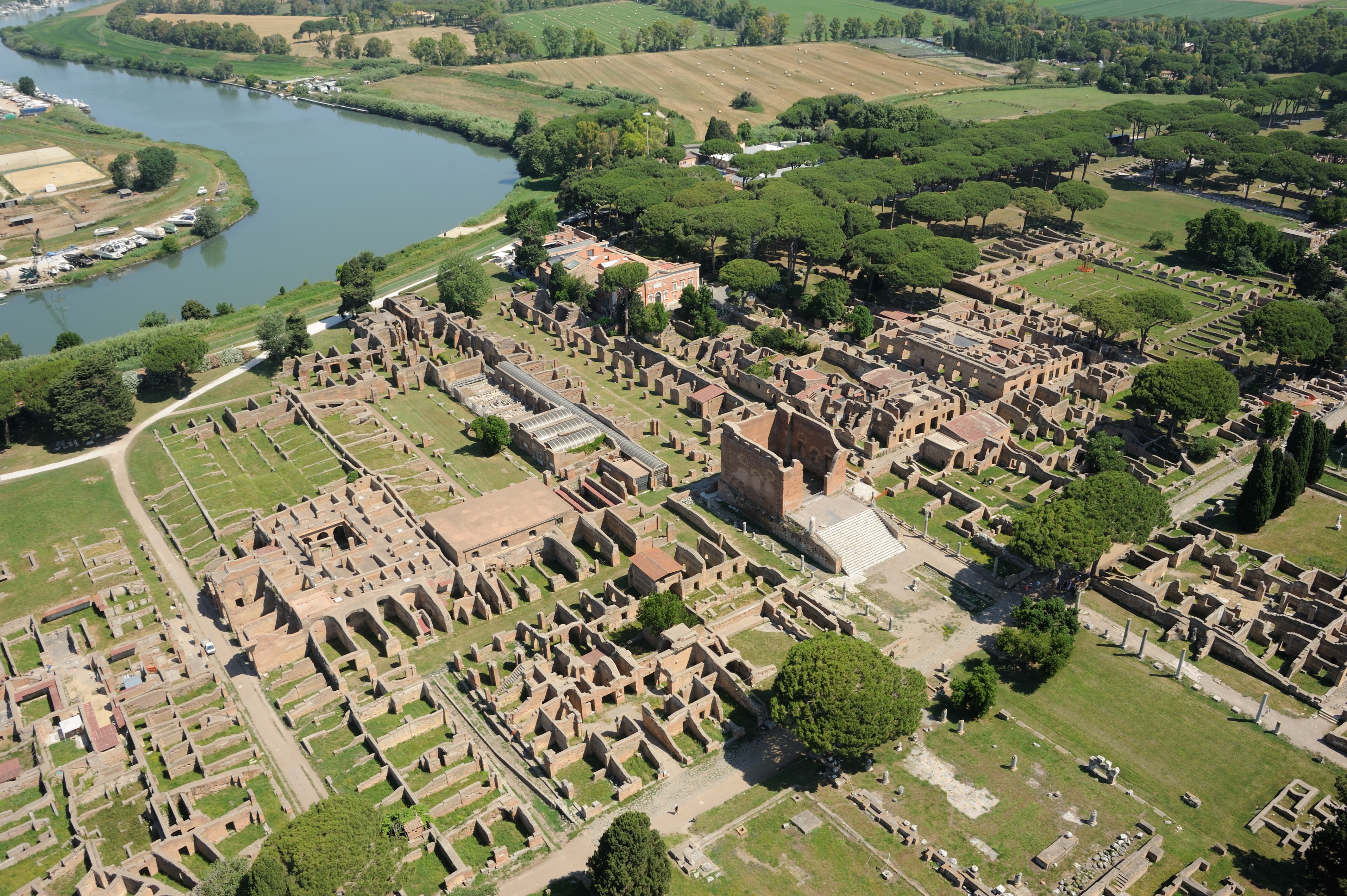
Bird's-eye view of the ruins of Ostia Antica
© Parco Archeologico di Ostia Antica